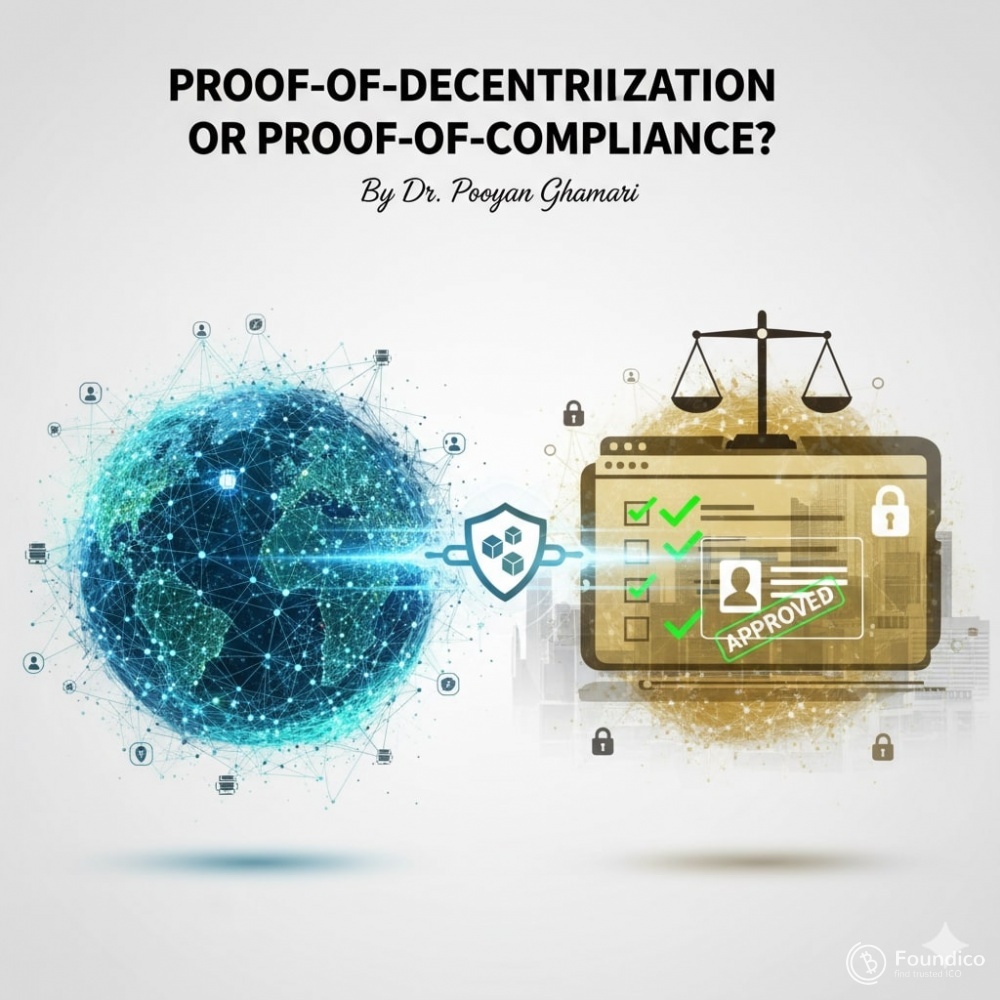Proof-of-Decentralization or Proof-of-Compliance?

The debate raging across the digital landscape often boils down to a fundamental tension: Decentralization versus Compliance. As blockchain technology matures and intersects with traditional finance, governance, and regulatory frameworks, the industry finds itself at a critical crossroads. The future may not be about picking one over the other, but rather understanding where each mechanism, Proof-of-Decentralization (PoD) and Proof-of-Compliance (PoC), offers the most value.
The Ideal of Proof-of-Decentralization (PoD)
The original ethos of blockchain is rooted in PoD. This mechanism aims to ensure that no single entity or small collective has undue control over a network, making it censorship-resistant, resilient, and trustless.
PoD is measured by factors like:
-
The geographic distribution of node operators.
-
The diversity of client software used.
-
The spread of stake among validators.
-
The difficulty of collusion to attack or censor transactions.
A highly decentralized network offers the greatest promise of an open, global, and permissionless financial system—a digital commonwealth where rules are enforced by code, not by centralized authority. It embodies the spirit of self-sovereignty.
The Reality of Proof-of-Compliance (PoC)
As digital assets gain mainstream adoption, the need to interact with established legal and financial systems becomes unavoidable. This is where PoC emerges. PoC is a framework or set of features that ensures a blockchain application, a transaction, or an asset adheres to specific regulatory requirements, such as Anti-Money Laundering (AML), Know-Your-Customer (KYC), or sanctions lists.
PoC is essential for:
-
Institutional adoption, which requires regulatory clarity and risk mitigation.
-
The stability of the global financial system, by preventing illicit activities.
-
The creation of compliant "tokenized real-world assets" (RWAs).
PoC often involves mechanisms like whitelisting addresses, incorporating decentralized identity solutions, or even having governance safeguards that can freeze assets under specific legal mandates. While it may seem to run counter to the maximalist decentralization narrative, PoC is often the key to unlocking trillions of dollars in traditional capital and securing regulatory approval for broader integration.
Finding the Equilibrium
The challenge is that excessive PoC can lead to centralized points of control—the very thing blockchain was designed to eliminate. If a handful of gatekeepers control the compliance layer, the system becomes vulnerable to regulatory capture, censorship, and failure, undermining the core tenet of PoD.
Conversely, a pure, uncompromising PoD system, while ideologically sound, risks being walled off from the regulated world, limiting its impact and potential for mass adoption.
The most viable path forward lies in a nuanced approach:
-
Compliance at the Edges: Applying PoC mechanisms at the interface where the blockchain meets the regulated world (e.g., exchanges, custodial services) while preserving the underlying protocol's decentralization.
-
Decentralized Compliance Tools: Innovating with Zero-Knowledge Proofs (ZKPs) and other privacy-preserving technologies to allow individuals to prove their compliance (e.g., that they are an accredited investor or not on a sanctions list) without revealing their identity or private transaction data to a central entity.
-
Governance for Resilience: Establishing decentralized autonomous organizations (DAOs) with diverse stakeholders to manage any necessary compliance features, ensuring no single corporate or governmental entity can dictate terms.
Ultimately, we must architect a future where Decentralization is the Default, providing the foundational security and trustlessness, and Compliance is an Optional, Proven Layer that enables interaction with the regulated economy without sacrificing the core principles of an open internet of value. This synthesis, rather than conflict, is the true engine of sustainable blockchain evolution.

 Maxi Doge - $MAXI is the meme-powered token of Maxi Doge—a body-building, 1000x-leverage-trading Doge who represents ultimate strength, hustle, and the grind of the bull market. He never skips leg day, a 1000x trade, and he definitely never touches grass.
Maxi Doge - $MAXI is the meme-powered token of Maxi Doge—a body-building, 1000x-leverage-trading Doge who represents ultimate strength, hustle, and the grind of the bull market. He never skips leg day, a 1000x trade, and he definitely never touches grass.